Journey through
Ancient Greece
Bronze Age Aegean: Crete & Santorini
We are sure you will
be enthralled by the history, archaeology, art, scenery & people
of these Aegean islands. The history of Crete & Santorini spans
over 5,000 years; our tour will concentrate on the Bronze Age,
or Minoan, sites with brief diversions into the Classical &
Byzantine periods.
Santorini
is a fabulously beautiful island with its dramatic caldera, the
result of the volcanic erruption thousands of years ago, white
houses and black beaches. It is also the site of the ‘Aegean
Pompeii’, the remarkably well preserved Bronze Age town of
Akrotiri, buried by the volcano, and only last year reopened
to the public.
|
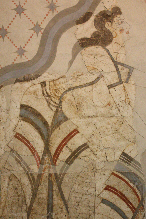 |
Crete in the Bronze Age
is the subject of much debate; the buildings excavated in the
last century, older than anything we see on the mainland, were
called palaces by the archaeologists but there is no evidence of
how this mysterious civilisation was governed; king Minos may or
may not have existed.
We fly to Santorini, staying 2 nights
in the village of Akrotiri, at the Caldera Romantica. We
then take the hydrofoil to Crete, staying 3 nights at the
Hotel Astoria Capsis, Iraklion, & 3 nights in Ayios
Nikolaos, at the Hermes Hotel. These are all excellent
hotels close to tavernas & local sights; the Caldera Romantica &
Hermes have swimming pools. None of the journeys is long, the scenery is stunning. On Crete we will be looked after as usual by
Christos who will bring his bus over from Athens for our tour;
on Santorini his assistant Chrissa will be with us.
|
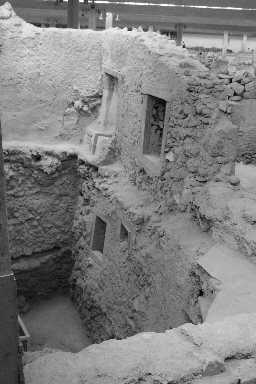 |
Day 1
We will fly to Santorini.
Day 2
We go to the remote
hilltop ancient city of Thira, founded around the 9th
century BC; most of the remains we see today are from the
Hellenistic period. We also visit the picturesque traditional
village of Pyrgos, right. In the evening we go to the Santos
winery, on the edge of the caldera, for a wine tasting.
Day 3 We will visit the Bronze
Age town of Akrotiri & superb pre-historic museum in
Fira where you will see the wonderful frescoes which
decorated the houses at Akrotiri and a profusion of pots & jugs
simply but elegantly decorated with swallows & grasses.
In the
evening we will take the hydrofoil to Iraklion.
|
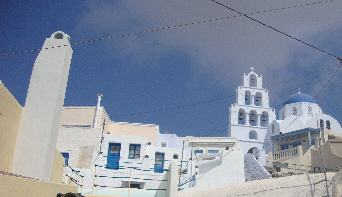 |
Day 4
We will first
visit the museum (next to our hotel) which houses the
stunning frescoes from Knossos, right, the painted sarcophagus from Ayia Triada, Kamares pottery, & many other glorious treasures
from the Bronze Age and later Cretan civilisations.
We next go to the
Bronze Age farm of Vathypetro, where we see a
well-preserved wine press and then to Arhanes; where
there is an excellent small museum containing finds from nearby
Bronze Age cemeteries. We will have a picnic or light taverna
lunch here.
Next we will visit the
best known of the Cretan Bronze Age sites, Knossos, the
'palace' excavated at the beginning of the C20th by Arthur Evans
and controversially reconstructed by him.
|
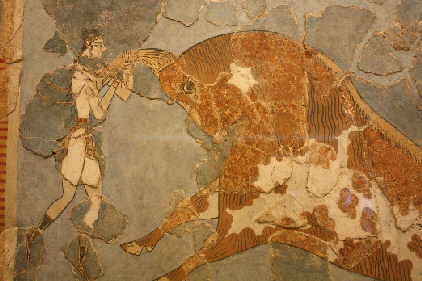 |
Day 5
We travel to the fertile agricultural plain of Mesara on the
south coast where we will visit two important 15th century BC
sites, Festos, right, the second largest of the palaces &
Ayia Triada, (right) possibly a summer 'palace',
where Linear A tablets were found.
On the way we stop
briefly at Gortyn, a Graeco-Roman site where, legend
relates, Zeus married Europa; the 1st century AD Odeion contains
the famous law code, dating from 500 BC.
|
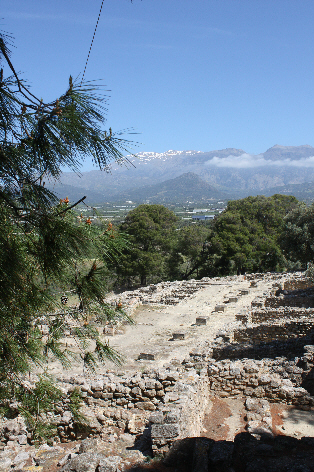 |
Day 6 we leave
Iraklion mid morning to visit the extensive Bronze Age palace complex
at Mália. The first palace here was built around
1900 BC; the remains we see today (right) are of a
replacement built around 1650 BC. It was here that the
magnificent gold bee-pendant (below) was
found.We then continue to Ayios Nikólaos
where we will stay at the Hotel El Greco which close to the beach in the centre of the town.
|
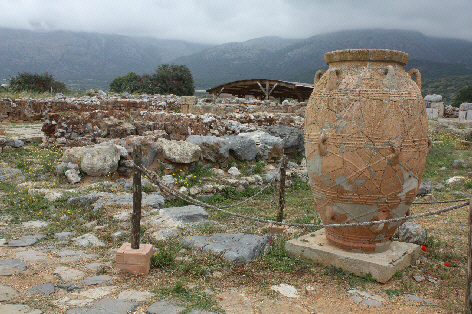 |
|
|
Day
7
In the morning we will visit the town of Gourniá,
where there
are remains of seventy houses built on the side of a hill, on
top of which is a small palace, built around 1500.
Next we will visit the 4th century BC town of Lató
dramatically set in the mountains (see right). Here there are a
number of houses, an agora, a temple and other public buildings
all of which were only excavated in the late 1960s.
|
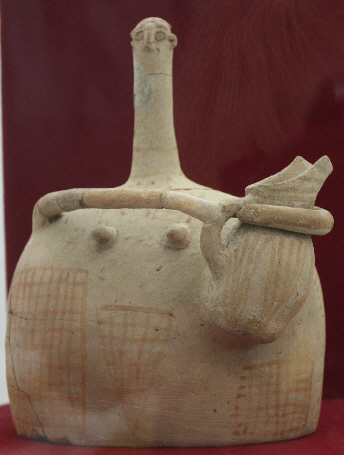
|
Day 8
We will visit the
church of
Panaghia Kira
in the mountain village of Kritsa where we can see some of the
most important C13th frescoes in Crete.
We will then go
to the former leper colony island of Sphinalonga (a short
boat trip from the village of Plaka). We will have a picnic or
taverna lunch by the water's edge in Plaka, overlooking Sphinalonga.
Day 9
The
day is spent relaxing in
Ayios Nikolaos
where we hope the archaeological museum will have reopened. It
has a fine & well displayed collection of local finds including
the Goddess of Mirtos, a jug from 2,500 BC, (right) & a large
number of clay larnakes (bath tubs/burial chests) painted
with octopus, birds & fish.
Day 9 Return to Iraklion for
the 13.30 flight arriving at Heathrow at
15.30
go back to home page |
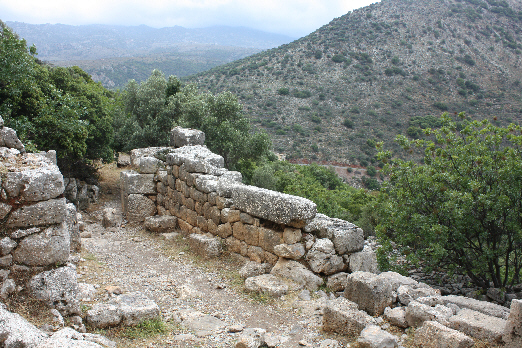 |
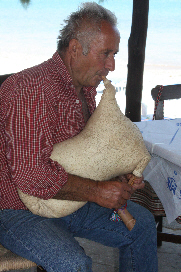 |
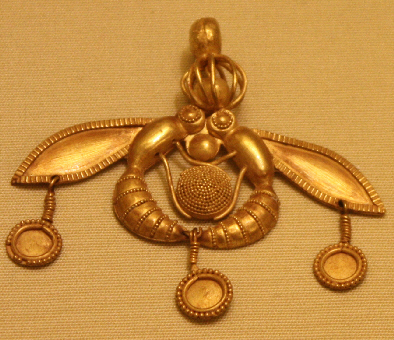
The
Gold Bees, in Iraklion Museum |
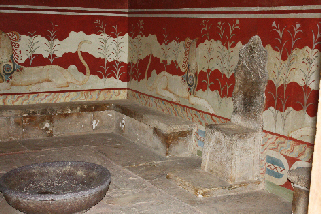
The
'Throne Room' at Knossos |

The Town mosaic, Iraklion Museum
|
|











